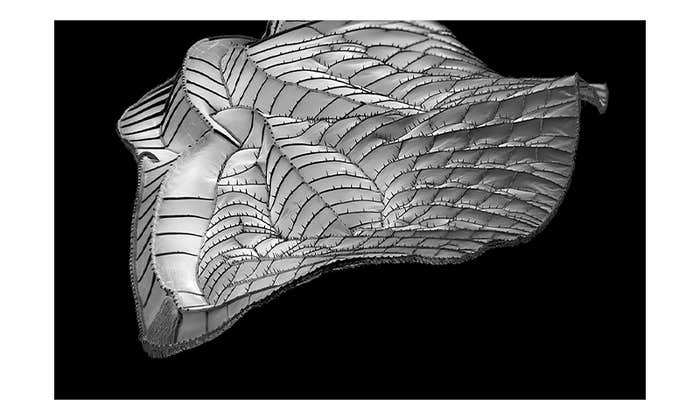Vijay Iyer doesn’t like the term “genius” and the jazz pianist is on a roll explaining why. “The ‘G word’ is often used to shut down conversation or inquiry into a particular artist, into his or her community and connection to others,” Iyer says. “No music happens in a vacuum.” What’s more, the label undercuts an artist’s ambition and drive. “Artists seek not just to be themselves but to transform themselves, to actually become something else,” Iyer says. That’s the force that revolutionizes their culture and ours.
Consider 1960 when saxophonist John Coltrane recorded “My Favorite Things,” the beloved pop tune from The Sound of Music. “When we listen to Coltrane’s ‘My Favorite Things’ now, we don’t think this is pop culture,” Iyer says. “We think of it as a cataclysmic event in the history of music that transformed our understanding of music. It brought something new to the table, structurally and emotionally. It wasn’t dealing with harmony and form in the usual way. It reached new extremes.”
Iyer is sitting at a piano on the bottom floor of his split-level apartment in Harlem. He plays “My Favorite Things” as Coltrane reimagined it, carving spacious modes into the verse-verse-verse-chorus, stepping up the tempo and going to town on the melody. Playing by memory, conjuring the notes as he goes, Iyer punches out the song’s rhythms with a jovial touch. Iyer may not utter the “G word” himself, but he beautifully demonstrates the nature of Coltrane’s genius.
The usual debate over genius—is it nature or nurture?—feels played out. Clearly it’s a combination of genes and the clubs you snuck into as a kid. A less traveled path of inquiry runs not through the lives of geniuses but through works themselves. Science explains how the world works. Perhaps we can explain how genius works by analyzing a technical form we love, like music. What are the notes and chords, melodies and harmonies—created by artists in their times—that changed music for all time?
Iyer, 42, is an ideal guide. A 2013 recipient of a MacArthur Foundation “genius” grant, he is versed in seeing the world through the lens of science. Iyer’s Yale undergraduate degree in math and physics paved the way to his Ph.D. in technology and the arts at the University of California, Berkeley. His dissertation explores how our minds and bodies beat in sync with the rhythms of West African and African-American musics.
The pianist, who has recorded over 15 albums of jazz, ranging into raga and hip-hop, has applied science to his own compositions. He rescored the beats of the ’70s soul tune “Mystic Brew” to the Fibonacci Sequence, the series in which each number is the sum of the preceding two (1,1,2,3,5,8…). The ratio of any two successive Fibonacci numbers, the “golden ratio,” is seen in nature, from atoms to sunflowers, and has inspired artists such as Da Vinci and Debussy. (Iyer’s Guardian essay on his music and the golden ratio was reprinted in The Best Writing on Mathematics 2010.)
Iyer’s 2014 album, Mutations, was sparked by “the noise in our genes,” he writes in the album’s linear notes. Evolution is not a “goal-directed process of absolute ‘betterment’ of a species,” it results from an interplay between a species and its fluctuating environment—an “ecosystem-wide improvisation.” The album’s music, for piano and string quartet, unfolds like a lattice of proteins, producing startling harmonies and tender lines.
In conversation Iyer can sound more formal than free-form, thinking through his answers before letting them go. He speaks like he plays, each sentence, like each chord, charged with sentience, designed to evoke. Despite his analytical bent, he is naturally genial. An instinctive teacher—he became a professor of music at Harvard in 2014—Iyer quickly warmed to the premise of our interview and clearly enjoyed playing key passages in Coltrane, Thelonious Monk, and Michael Jackson. You can watch his detailed explanations and demonstrations in the video clips throughout the article.
Content he has stated his piece about the limitations of the term genius, Iyer admits there is one artist “we can use the ‘G word’ with,” and that is New York jazz pianist and composer Thelonious Monk, who lived from 1917 to 1982, and wrote the now jazz standards “ ’Round Midnight” and “Straight, No Chaser.” To Iyer, Monk lived on the frontier of human perception. “He heard something others hadn’t yet accessed,” Iyer says. “Things we take for granted in the jazz like the flatted fifth, the sharp eleventh, or ways of voicing chords, are there because of him.”
Monk figures in Iyer’s Ph.D. dissertation, based on embodied cognition, the idea that the brain’s motor and cognitive systems, stirred by culture, perpetually influence one another. I dance, therefore I am. Musicians tap that inner pulse, and none more deeply than Monk. “There’s a persistent and unified perspective on sound and rhythm in every corner of Monk’s music,” Iyer says. “You can hear him challenging himself or challenging the ear, reaching for something that has a certain kind of roughness or pungency, something both familiar and unfamiliar.”
An instrument disappears in the hands of a masterful musician. He is playing the notes in his imagination rather than on the piece of technology in his hands. Monk went further. The piano itself, its resonance, the act of playing it, constitute his sound. “You hear his hands at work,” Iyer says. “It’s not about transcending the relationship between the hands and the instrument; it’s about featuring that process, that interaction with the instrument as a body. There is a sort of physics going on here. He’s going for a vibratory exhortation with the instrument.”
As Iyer breaks down the signature musical elements of the artists he loves, and plays them with vibrancy, his philosophy of music is apparent: It don’t mean a thing if it ain’t got that swing.
“Rhythm is the seat of music,” Iyer says. “Before we even notice that it’s music, its rhythmic character gets inside of us. Music starts with the sense of a body doing something, a sense of pulse that might map onto our own sense of pulse. It might come from our embodied experience of walking or breathing or a heartbeat. To me, this experience we call music comes from the sound of another body moving in time, and that reminds of us the way we move in time.”
And what rhythm sparks his own pulse? The jazz artist answers: “Wanna Be Startin’ Somethin’ ” by Michael Jackson. Iyer demonstrates the song’s killer groove, built on layers of rhythm. He plays the bass notes with his left hand and taps his right index finger on top of the piano. “All these interlocking parts have a slightly different profile, some points of connection, some points of relief against each other,” he explains. “They have this magnificent power and feeling that the beat could go on forever, and it would be OK if it did. You don’t want it to end. You just want to feel like it would still be there when I come back.”
Iyer grins after working out the Jackson tune. Genius is in the groove. “I’m pretty certain,” he says, “that is what music is for: creating this unifying rhythmic experience that binds us together.”






























